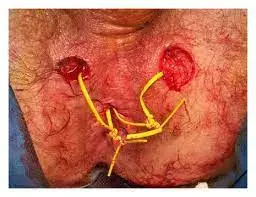- Home
- Medical news & Guidelines
- Anesthesiology
- Cardiology and CTVS
- Critical Care
- Dentistry
- Dermatology
- Diabetes and Endocrinology
- ENT
- Gastroenterology
- Medicine
- Nephrology
- Neurology
- Obstretics-Gynaecology
- Oncology
- Ophthalmology
- Orthopaedics
- Pediatrics-Neonatology
- Psychiatry
- Pulmonology
- Radiology
- Surgery
- Urology
- Laboratory Medicine
- Diet
- Nursing
- Paramedical
- Physiotherapy
- Health news
- Fact Check
- Bone Health Fact Check
- Brain Health Fact Check
- Cancer Related Fact Check
- Child Care Fact Check
- Dental and oral health fact check
- Diabetes and metabolic health fact check
- Diet and Nutrition Fact Check
- Eye and ENT Care Fact Check
- Fitness fact check
- Gut health fact check
- Heart health fact check
- Kidney health fact check
- Medical education fact check
- Men's health fact check
- Respiratory fact check
- Skin and hair care fact check
- Vaccine and Immunization fact check
- Women's health fact check
- AYUSH
- State News
- Andaman and Nicobar Islands
- Andhra Pradesh
- Arunachal Pradesh
- Assam
- Bihar
- Chandigarh
- Chattisgarh
- Dadra and Nagar Haveli
- Daman and Diu
- Delhi
- Goa
- Gujarat
- Haryana
- Himachal Pradesh
- Jammu & Kashmir
- Jharkhand
- Karnataka
- Kerala
- Ladakh
- Lakshadweep
- Madhya Pradesh
- Maharashtra
- Manipur
- Meghalaya
- Mizoram
- Nagaland
- Odisha
- Puducherry
- Punjab
- Rajasthan
- Sikkim
- Tamil Nadu
- Telangana
- Tripura
- Uttar Pradesh
- Uttrakhand
- West Bengal
- Medical Education
- Industry
Minimally invasive surgery techniques have higher rate of healing than classic surgical techniques in Crohn's disease

New surgical techniques showed better healing rates in Crohn's disease patients than classical techniques suggests a new study published in the BMC Surgery
Treating complex perianal fistulas in Crohn’s disease patients remains a challenge. Classical surgical treatments for Crohn’s disease fistulas have been extrapolated from cryptoglandular fistulas treatment, which have different etiology, and this might interfere with its effectiveness, in addition, they increase fecal incontinence risk. Recently, new surgical techniques with support from biological approaches, like stem cells, have been developed to preserve the function of the sphincter. We have performed a systematic literature review to compare the results of these different techniques in the treatment of Crohn’s or Cryptoglandular fistula.
PubMed, EMBASE, Database of Abstracts of Reviews of Effectiveness, Cochrane Central Register of Controlled Trials were searched systematically for relevant articles. We included randomized controlled trials and observational studies that referred to humans, were written in English, included adults 18+ years old, and were published during the 10-year period from 2/01/2010 to 2/29/2020. Evidence level was assigned as designated by the Scottish Intercollegiate Guidelines Network.
Results
• Of the 577 citations screened, a total of 79 were ultimately included in our review.
• In Crohn’s disease patients, classical techniques such as primarily seton, Ligation of Intersphincteric Fistula Tracks, or lay open, healing rates were approximately 50–60%, while in cryptoglandular fistula were around, 70–80% for setons or flaps.
• In Crohn’s disease patients, new surgical techniques using derivatives of adipose tissue reported healing rates exceeding 70%, stem cells-treated patients achieved higher combined remission versus controls, mesenchymal cells reported a healing rate of 80% at week 12. In patients with cryptoglandular fistulas, a healing rate of 70% using derivatives of adipose tissue or platelets was achieved, and a healing rate of 80% was achieved using laser technology.
• Fecal incontinence was improved after the use of autologous platelet growth factors and Nitinol Clips.
New surgical techniques showed better healing rates in Crohn’s disease patients than classical techniques, which have better results in cryptoglandular fistula than in Crohn’s disease. Healing rates for complex cryptoglandular fistulas were similar between the classic and new techniques, being the new techniques less invasive; the incontinence rate improved with the current techniques.
Reference:
García-Olmo, D., Gómez-Barrera, M. & de la Portilla, F. Surgical management of complex perianal fistula revisited in a systematic review: a critical view of available scientific evidence. BMC Surg 23, 29 (2023).https://doi.org/10.1186/s12893-023-01912-z
Dr. Shravani Dali has completed her BDS from Pravara institute of medical sciences, loni. Following which she extensively worked in the healthcare sector for 2+ years. She has been actively involved in writing blogs in field of health and wellness. Currently she is pursuing her Masters of public health-health administration from Tata institute of social sciences. She can be contacted at editorial@medicaldialogues.in.
Dr Kamal Kant Kohli-MBBS, DTCD- a chest specialist with more than 30 years of practice and a flair for writing clinical articles, Dr Kamal Kant Kohli joined Medical Dialogues as a Chief Editor of Medical News. Besides writing articles, as an editor, he proofreads and verifies all the medical content published on Medical Dialogues including those coming from journals, studies,medical conferences,guidelines etc. Email: drkohli@medicaldialogues.in. Contact no. 011-43720751


